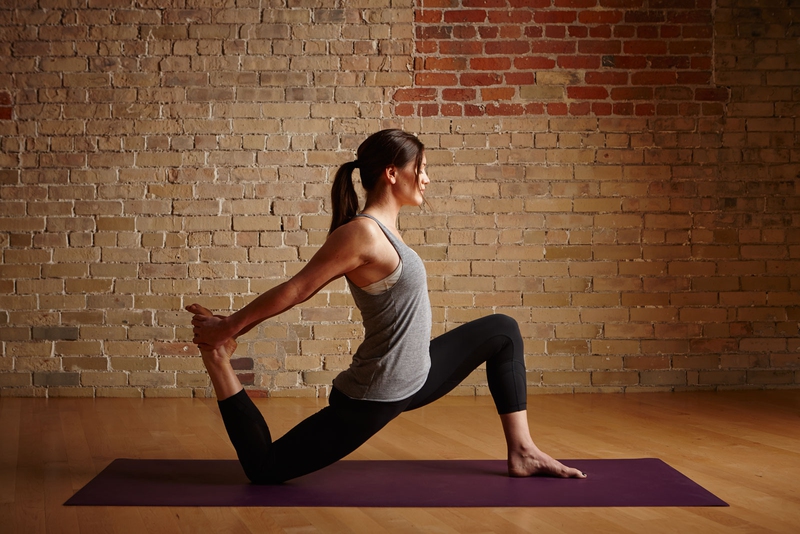If you think about touching your toes as a remote dream that cannot come true and you are wondering how to become flexible fast, you should know that lifestyle choices can help you get there. Good nutrition, some physical activity and plenty of water are the perfect start toward answering the question of how to become flexible fast. You don’t have to bend your body into impossible shapes or practice for hours each day to make your body more flexible, you just have to follow a few tips regularly and consistently.

Top 9 Tips to Help You Become Flexible Fast
Start with dynamic stretching
A while ago it was widely believed that static stretching is the best tip on how to become flexible fast. However, those days are over. New research shows that static stretching before exercise is not as good for flexibility as dynamic stretching. Dynamic stretching means all the moves you can do with the weight of your own body. So before starting your usual workout, begin with some front and side lunges, squats, jumping jacks, and push- ups. To properly warm up, do about 3 sets of each move for 5-10 repetitions. At the end of the warm-up, you should be slightly sweaty but not tired, so adjust your own warm-up as it fits you best.
Find the balance
Muscles that are working hard to gain balance or keep you standing do mainly one thing: they alert the brain that a fall is imminent, and therefore tension is necessary to prevent it. If you want your muscles to open up, you should place yourself in a position in which is comfortable to sit in for a while, for example for watching TV. Ideally, you should find a position in which your brain thinks everything is safe. If it’s hard for you to sit in a certain position and keep your balance, feel your way around a bit and find a similar position with a better balance.
Progress slowly
Be gentle with yourself, for the same reason mentioned above. The more difficult it is to maintain a position, the more the brain thinks you’re in danger of falling. Instead of pushing for the maximum stretch, start with a simpler version of the position. After it becomes easy for you to sit in that position, try a more advanced version of the same position. Start with easy moves and gradually make your way to bigger stretches on a daily basis.
Add isometric exercises
Isometric exercises are very similar to static stretching. The main difference is that at the peak of the movement, you should push against an obstacle that will not move, like a wall. The classical example of isometric exercise is the plank. Much in the same way, find a wall to push your heels against when you stretch your hamstrings. Extend your leg all the way back in upright position until your heel makes contact with the wall, and then start pushing. Isometric exercises favor micro contractions that make your muscles more powerful, while at the same time protecting the length of your tendons.
Do some yoga
Yoga is renowned for fast tracking your way to flexibility and is probably the best how to become flexible fast tip. Doing yoga is famous for enhancing flexibility, so this one is pretty self- explanatory.
Dance!
Your body already knows what to do to get you into a position you want. Dancing helps you learn to trust your body with what it does best. Flexibility comes from a balance between coordination and muscle fitness, and dancing is perfect to teach you both.
Breathe deeply
This is not an obvious one. If you want your muscles to open beyond their current means, you should focus on relaxing. Take in deep breaths and try to put your mind at ease in preparation for flexibility practice. When you make an effort, breathe in; when you are trying to ease yourself into a position requiring flexibility, slowly breathe out. This breathing technique will help release muscle tension and gain balance.
Leave some room for static stretching
While static stretching has fewer benefits than dynamic stretching to start a training session, it is still the best way to end one. Recent studies show that static stretching should be left for the end of the session, when it can help cool your muscles down. Your muscles are warm and flexible at the end of the training, so static stretching, meant to push your joints to fully open up, is best incorporated when your muscles already want to cooperate. However, as said before, static stretching is not great for starting with because your muscles are stiffer.
Don’t push too hard
Don’t forget that becoming flexible should help your overall health rather than make it worse. The incredible Cirque du Soleil artists pay for their amazing feats later in life. Hyper-flexibility is a gift and a curse, because it diminishes the athletic abilities of the body, and decreases your strength. Many times, those artists need surgery and pain management in their late years. You should aim for a balance between flexibility and strength. Instead of trying extreme positions like bending toward the back and placing your head between your legs, you should consider whether that really helps your health or not. Unless you are looking for a career as a professional entertainer, focus on balancing your goals with your own good.

View All Comments /Add Comment